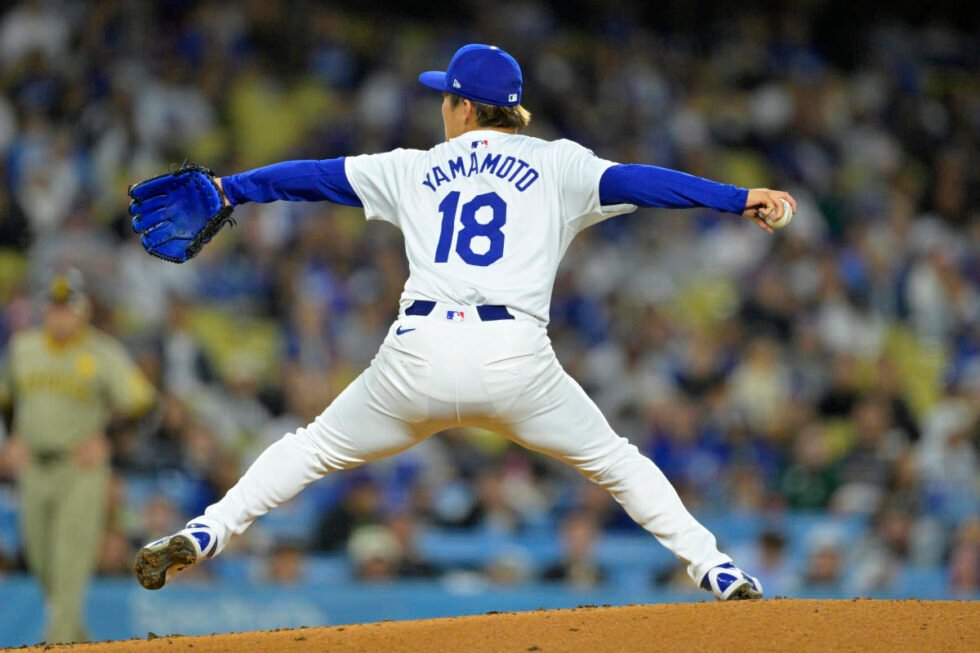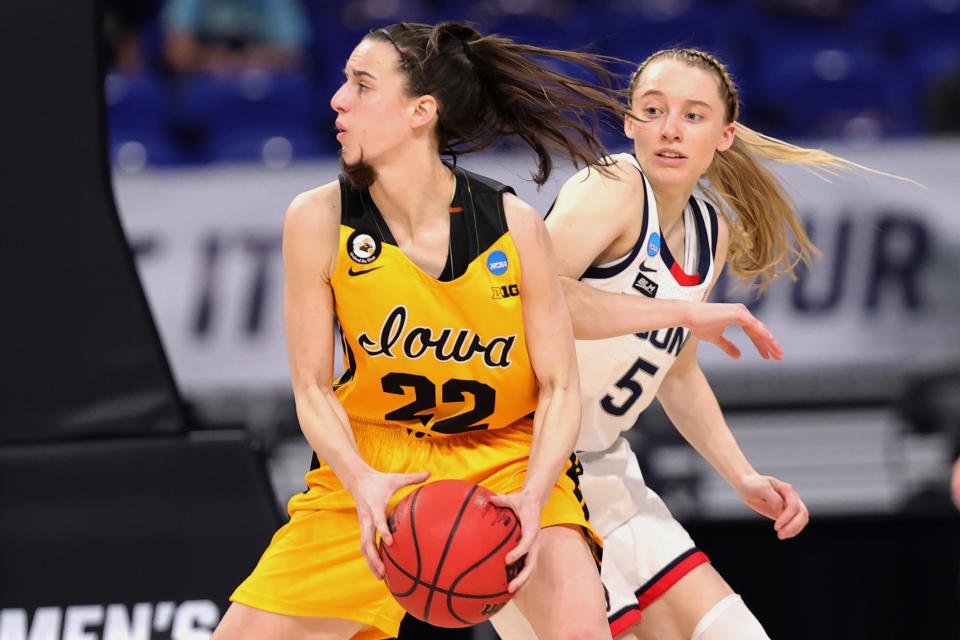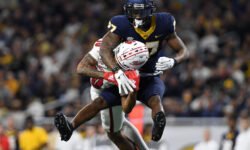
It has been nearly four months since the Dodgers outbid several of their fellow big-market behemoths to sign right-hander Yoshinobu Yamamoto to the largest free-agent contract ever given to a pitcher: a staggering, 12-year, $325 million pact, plus a posting fee of more than $50 million sent to his former team in Japan, the Orix Buffaloes. It was a spectacular capper to a historic offseason for the Dodgers that also included the seismic signing of Shohei Ohtani and the acquisition of Tyler Glasnow.
Any nine-figure contract is going to create substantial hype and sky-high expectations, but most players signing such deals come with a level of familiarity and certainty rooted in a track record of MLB success. Yet while fans might’ve seen Yamamoto in last year’s World Baseball Classic or in strikeout reels from his time with the Buffaloes, for the most part, he was a wholly new character in need of introduction to the MLB audience.
In turn, the lead-up to Yamamoto’s first pitches as a big leaguer — first in Arizona, then in South Korea and, finally, at Dodger Stadium — was defined by curiosity as much as anything. Sure, we could all marvel at his eye-popping stats and various PitchingNinja clips, but just who was this guy? What was his repertoire? Why was he so good? What would a full outing from Yoshinobu Yamamoto against the best hitters in the world actually look like?
Well, after four regular-season starts — with the fifth scheduled for Friday in Los Angeles against the surging Mets — we’re starting to find out.
How is Yamamoto’s arsenal translating to MLB?
It wasn’t the best first impression. Although he dazzled in a handful of bullpens and live BP sessions, Yamamoto’s Cactus League outings weren’t nearly as sharp. The stuff was crisp, but the command was not; he allowed nine runs on 15 hits across 9⅔ frames in spring training.
Then he joined his new teammates on a trip across the globe, where his MLB debut took place under rather unusual circumstances: in the Seoul Series against the Padres, the first MLB regular-season games ever played in South Korea. As exciting as the event was for the league and the fans at the Gocheok Sky Dome, Yamamoto hardly looked comfortable. He needed 43 pitches to get through his only inning of work, and San Diego knocked him around for five runs in one of his worst outings as a professional pitcher.
Since returning stateside, however, Yamamoto has looked much more like the pitcher he was hyped up to be. He has delivered three straight starts of five innings, blanking the Cardinals and Cubs before looking a tad shakier in his rematch against the Padres. In those three starts, he struck out 19 batters with just three free passes and allowed only three runs, all of which scored on two homers surrendered to Manny Machado and Ha-Seong Kim. All in all, Yamamoto has started to settle in, and the results have followed.
But how exactly has he done it? Is he attacking big-league bats the same way he went after NPB hitters? While we’re still working with a modest sample — 282 total pitches across four starts — his repertoire is starting to crystalize, including one notable change worth monitoring.
Here is Yamamoto’s pitch usage in his final season in NPB, in which he posted a 1.21 ERA in 164 innings across 23 starts (via DeltaGraphs):
-
Four-seam fastball: 41.7% – 95 mph AVG
-
Splitter: 26.3% – 90 mph AVG
-
Curveball: 15.6% – 77 mph AVG
-
Cutter: 8.5% – 92 mph AVG
-
Two-seam fastball: 5.9% – 94 mph AVG
-
Slider: 1.8% – 83 mph AVG
In his three spring outings, Yamamoto simplified slightly and featured just four offerings with a similar usage rate across 151 pitches:
-
Four-seam fastball: 47% – 95 mph AVG
-
Curveball: 21% – 78 mph AVG
-
Splitter: 19% – 90 mph AVG
-
Cutter: 13% – 91 mph AVG
As was the case for many NPB aces before him, the splitter was Yamamoto’s preferred secondary pitch in Japan. Paired with an excellent fastball with plus velocity and carry at the top of the zone, Yamamoto’s splitter was expected to immediately be one of the most effective off-speed pitches in MLB, similar to how Kodai Senga’s “ghost fork” took the league by storm in his rookie season in 2023.
On the other hand, there was some industry-wide skepticism about how much Yamamoto would be able to rely on his slower curveball to get big-league hitters. Granted, this was less about Yamamoto and more reflective of a league-wide trend away from the pitch. In recent years, the traditional curveball has lost its luster as a go-to secondary pitch. While it remains one of the most aesthetically pleasing pitches, sliders thrown with more velocity and sharper vertical movement and sweepers with more extreme horizontal movement have proven more effective at producing whiffs and weak contact.
However, Yamamoto might be in the process of making the curveball cool again. Here’s his pitch usage through four regular-season MLB starts:
-
Four-seam fastball: 41.5% – 95 mph AVG
-
Curveball: 28% – 78 mph AVG
-
Splitter: 23.4% – 90 mph AVG
-
Cutter: 6.7% – 91 mph AVG
-
Slider: 0.4% – 83 mph AVG
It helps that Yamamoto’s curve features some of the sharpest movement of any hook in the league, making it especially satisfying to watch when he snaps one off for a whiff or a called strike. But if he continues to lean on his yakker to this degree — especially alongside a heavy dose of splitters — it immediately makes his arsenal one of the most unique among MLB starting pitchers. That’s because almost no one in MLB is throwing a curveball and a splitter as frequently as Yamamoto.
Even as the splitter has become more popular among domestic pitchers, throwing it more than 20% of the time puts Yamamoto in the small group who rely so heavily on the pitch, along with Kevin Gausman, Keaton Winn and Frankie Montas. That said, Yamamoto bringing his version of the pitch to the league falls in line with a larger trend. So far this season, splitters account for 3.2% of pitches thrown across MLB, a record high in the pitch-tracking era (since 2008) after the mark cleared 2% for the first time last year. Yamamoto and fellow NPB star Shota Imanaga are certainly contributing to that early-season bump.
On the other hand, if Yamamoto is able to sustain anything close to this level of dependence on his curveball, it’ll be a fascinating — and fun — departure from the league-wide push away from that pitch. While splitter usage has spiked to an all-time high, curveballs currently account for just 8.2% of pitches thrown across MLB — the lowest rate of the pitch tracking era (since 2008). That mark was nearly 11% as recently as 2020.
So far this season, only five starters (min. 250 pitches thrown) have thrown a higher percentage of curveballs than Yamamoto, and none of them throws a splitter. Last season, only seven starting pitchers (min. 2,000 pitches thrown) threw at least 28% curveballs, and none of them threw a splitter, either. The only pitcher with a remotely comparable arsenal to what Yamamoto has shown thus far is Nathan Eovaldi, whose splitter usage has skyrocketed in recent seasons while his curveball dependency has held steady around 15-20%.
Of Yamamoto’s 21 strikeouts so far in 2024, eight have come on splitters, eight on curveballs, four on four-seamers and one — his first as a big leaguer — on a cutter. It’s quite the mix.
What should we expect from Yamamoto going forward?
These early trends should not be taken as gospel, of course. There’s a long season (and career) ahead for Yamamoto. Perhaps the slider or two-seamer will reemerge as reliable offerings. Maybe the splitter will reassert itself as Yamamoto’s go-to secondary offering as opposing hitters start to adjust to his curveball. Each additional start will reveal more about Yamamoto’s plan of attack and ability to acclimate to MLB. And while we remain focused now on how he is adjusting, the league will adjust back in due time — and back and forth and so on.
Yamamoto did not garner his gargantuan contract because he was expected to perform like a Cy Young front-runner from the get-go. Rather, it was his unparalleled track record of dominance in the world’s second-best league, his exceptional combination of stuff and command and, perhaps most importantly, his unique status as a 25-year-old free agent — one with his best years ahead of him, in theory.
Because no matter the size of his contract or his career accolades to this point, we’re talking about a pitcher born in 1998. Yamamoto might be the most accomplished “rookie” in baseball history, but he’s still a rookie — and, thus, far from a finished product. He’s virtually the same age as some other talented yet inexperienced starters such as Bryce Miller, Hunter Brown and Brandon Pfaadt, who are all in the process of figuring out what works and what doesn’t against big-league hitters. Heck, Yamamoto is a full year younger than his new teammate Landon Knack, who made his MLB debut in the Dodgers rotation earlier this week.
With all that in mind, we should continue to treat Yamamoto like the rookie he is while assessing what kind of pitcher he is now and what kind of pitcher he’s trying to become, one start at a time.
EMEA Tribune is not involved in this news article, it is taken from our partners and or from the News Agencies. Copyright and Credit go to the News Agencies, email [email protected] Follow our WhatsApp verified Channel









